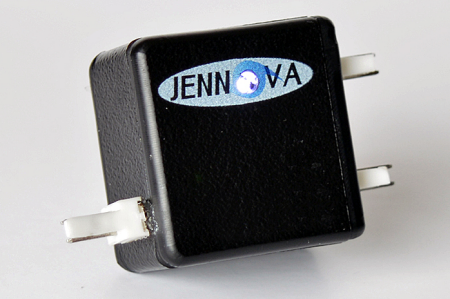
Whole New World
The global commercialization of the Internet is on the verge of connecting 75% of the world's population. Tens of billions of devices will join this robust and ever-changing ecosystem over the next five years as 5G becomes a reality and trillions of sensor readings every hour help solve real-human problems ranging from energy, water, and food shortages to terrorism.
Other benefits will result in new business models and IT-based services highlighted by a global network of computers working together through super real-time connections to provide the remote control and monitor of 50 billion M2M tools. Dynamic vehicular mapping and the automated operation of everything from lighting and temperature within buildings are just a few examples.
Every Silver Lining Has Its Clouds
Undoubtedly, hurdles surrounding security, language interoperability and the quantification of fiscal values will have to be cleared by developers, especially within facilities environments, for IoT to become an affordable reality. Additional key issues involve the man-hour costs involved with the full-scale implementation of IoT technologies. This is especially true with older building management systems, which under present conditions would offer limited ROI due to the intensive labor costs associated with their conversion.
Considering that IoT will entail the integration of trillions of sensors as well as their counterpart nodes and gateways, exorbitant implementation expenses are to be expected. The high cost of integration along with its potentially disruptive methodology are also likely to delay if not totally prohibit many potential users from adopting IoT systems directly into their businesses or residences.
An Eye For Energy Opps
Identifying opportunities that reduce the need for the full-scale invasion of infrastructure is the best approach to solve integration cost issues. One of the most promising methods for lowering these expenses is energy harvesting (EH), which includes the gathering of energy from ambient sources or the energy lost in other process functions.
Low Power Is No Deterrent
The problem is that most current energy harvesting solutions do not create enough energy to act as a viable replacement power source. However, while most systems are still only gathering energy in the microwatt range, new technologies have emerged that are easily able to consistently harvest 10 mW or more. Although that might not be enough energy to power every IoT layer, it certainly presents the opportunity to create the independent power needed to operate both sensors and nodes, which constitute a significant percentage of the physical side of any IoT system.
While there are multiple types of energy harvesting topologies available, reaching a valuable power output is key. Drip charging is often talked about in the dynamically shifting landscape of IoT power. However, requirements are continually changing based on the perceived value of data collection as well as the ability to grow collect data in exponential proportions.
So, it is no longer a scenario of daily or even hourly readings, but the need to retrieve, review and react to metadata instantaneously. This includes self-powering multiple IoT layers and increasing the transmission of data rates and overall acquisition functionality in everything from integrated sensor networks to process monitoring and control systems.
Next page
In addition, these new EH systems are virtually error-free and operate by harvesting the energy that is typically lost in mechanical motion. In most instances, sensors operating with a maximum iteration rate of 10 minutes require a 2032 battery that needs changing about every six months. Conversely, there is no defined limit to how long these new technologies can produce energy. As long as there is motion, they can create power. In fact, EH has been tested as a replacement power-source for wireless transmitting sensors that would typically require a 2032 battery (fig. 1). Conversely, one EH unit can power up to four of these sensor types. Furthermore, since they incorporate a simple design with no moving parts, wear and tear is not really an issue.

Fig. 1: Patented EH technology simplifies the capture of energy produced from the rotation or spin of other devices to power an endless array of smart sensors and IoT applications.
Another virtue is their extreme versatility and efficiency. Using magnetic induction to gather energy from rotation or the motion of virtually any device, the latest motion-based EH technologies readily generate 16 mW and as much as 64 mW using several systems.
By using EH as the power option, IoT based systems and traditional building management systems can potentially reduce installation time, while creating more cost approachable options for retrofitting new technologies into old buildings and/or infrastructure. This can be performed through a two-step process that includes attaching the magnets to rotational sources and then affixing the energy harvesting board to desired locations. Once installed, no further maintenance or calibration is required.
In The End
IoT is a reality that will benefit millions, if not billions of homeowners and businesses over the next decade. Energy Harvesting technologies are now working to eliminate the aforementioned challenges by offering a constant and instantaneous source of energy. The benefits and applications produced through the near seamless integration of IoT and EH are massive and potentially limitless on a small scale. As an example, Jennova is currently developing an EH-battery combo that greatly reduces high-cost installations and increased maintenance costs.
About the Author
Terry Pennisi is the CEO and founder of Jennova Inc., a specialist in smart energy management solutions. For more information on Jennova and its Electrodynamic Energy Harvesting (EH) technologies and products, please visit http://www.jennova.com or call 615-442-6551.
Related Stories
Wearables Harvest Power From Body Heat
Energy Harvesting System for Wireless Sensor Network Market Worth 1576.9 Million USD by 2022